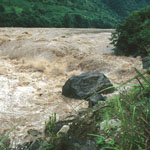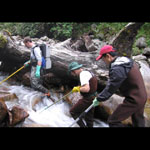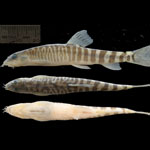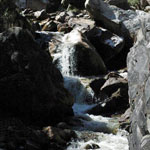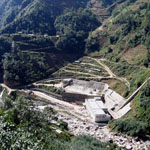
|
||||||||||||||||
|
||||||||||||||||
|
||||||||||||||||
Ichthyology in the Gaoligong MountainsChina has the highest fish diversity in Asia, and Yunnan has the highest diversity of fishes of any province in China. The GLGS has a unique fish fauna that reflects the diversity of river basins in the region. The fauna includes both wide-ranging species and narrowly endemic species; species with affinities to Himalayan taxa, and others that are closely related to groups more diverse in lowlands. These observations are likely tied to the high diversity of available habitats in the GLGS. The two major drainages in our study area are the Irrawaddy and the Nujiang (or Salween). These rivers (along with the adjacent Lancanjiang, or Mekong) traverse the region from north to south through spectacularly narrow parallel gorges. All three rivers head in glacial snowfields on the Himalayan Plateau, drain southward through deep and spectacular parallel gorges. The combination of glacial melt and summer monsoons result in extreme seasonal fluctuations in flow and a generally high sediment load. As the mainstem Irrawaddy does not get into China, we have focused on its tributaries and those of the adjacent Nujiang. The Nujiang is a big whitewater river that is extremely difficult to work with conventional techniques. The gradient of the mainstem in the GLGS is 2-3x steeper than that of the Colorado River through the Grand Canyon, while flow is roughly equivalent, and the channel is approximately the same width! Our principal goals for this project are to identify what fishes occur in the Gaoligongshan region, how they are distributed across the landscape, and what factors are responsible for the observed patterns. Discoveries
Who is involved?
Where we collectedMap the fishes surveyed in each county by clicking on the links below. 2000: Nujiang Prefecture, Gongshan, Lushui and Fugong Counties |
|
|
||||||||||||||
|
|
|
|||||||||||||||
|
|
Ichthyology field team 2006 |
||||||||||||||

